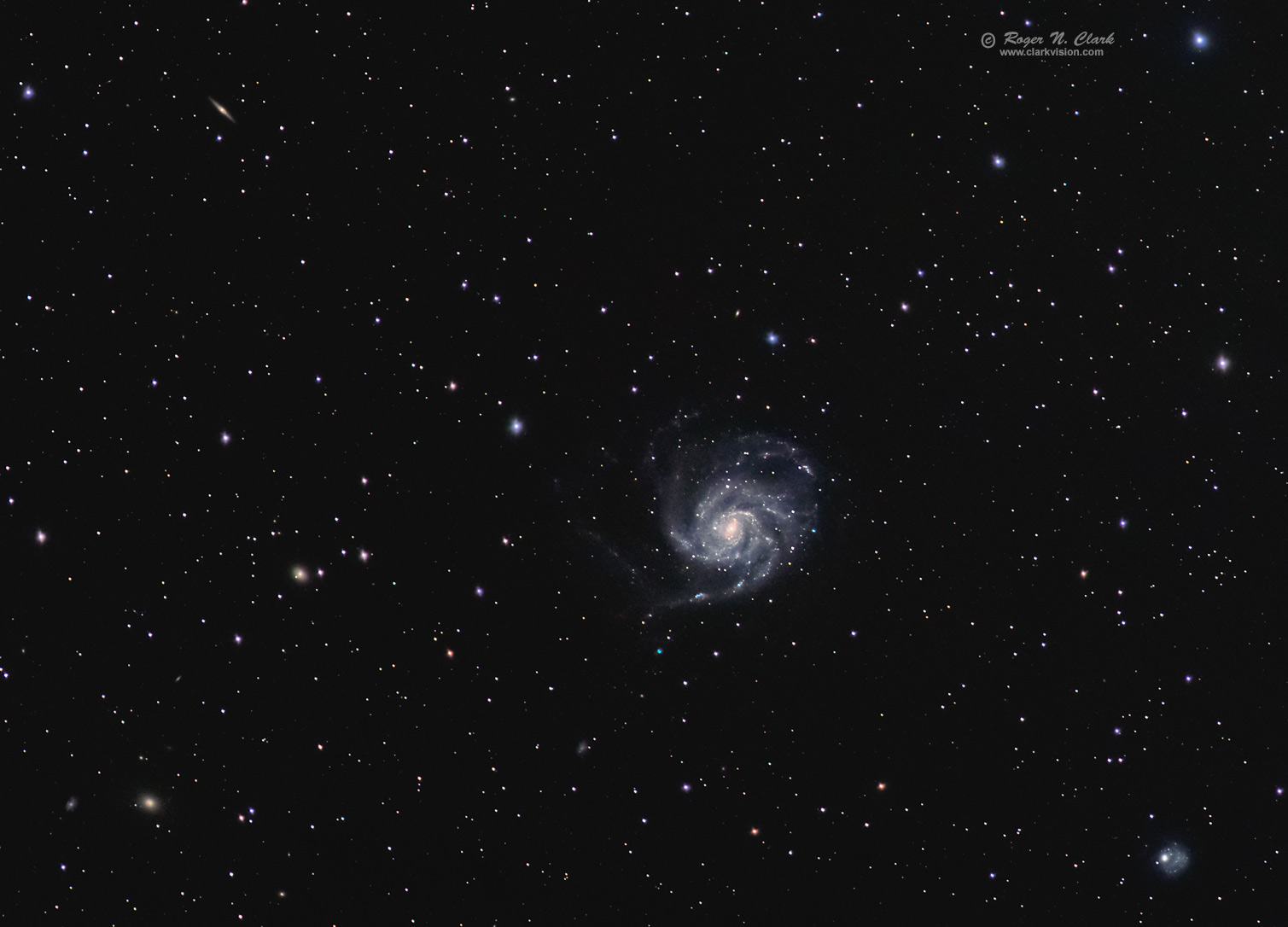| Home | Galleries | Articles | Reviews | Best Gear | New | About | Contact | Gallery Index | Previous |
Next |

| Home | Galleries | Articles | Reviews | Best Gear | New | About | Contact | Gallery Index | Previous |
Next |

Messier 101 is a beautiful face-on spiral galaxy in the constellation Ursa Major. M101 is about 21 million light years distant and visible as a faint patch in binoculars from dark skies. The spiral arms can be seen in modest sized amateur telescopes about 8-inches and larger. With 12-inch class telescopes, intricate details in the spiral arms are visible.
This is a natural color image. The high dynamic range of astrophotos must be stretched to bring out the range of details the camera recorded. But the typical image stretch process loses color for brighter subjects (e.g. stars and the brighter parts of deep sky objects become whiter as they are made brighter). This image uses a new algorithm, rnc-color-stretch that does not lose color during the stretch. How do we know the colors are reasonable? The star colors can be checked against stellar photometry. Red stars have B-V > 2, orange stars have B-V of 1 to about 2. The blue-white stars have B-V in the range of 0 to -0.5. The colors closely follow the color sequence in Table 1 at Color of Stars. Solar-type stars have a B-V of 0.63 and appear close to white (daylight white balance).
Technical. Canon 7D Mark II 20-megapixel digital camera and 300 mm f/2.8 L IS II at f/2.8 plus a 1.4x teleconverter giving 420 mm at f/4, ISO 3200 and 2-arc-seconds per pixel. Eighty seven 30-second exposures at ISO 3200 were added (43.5 minutes total exposure). I would normally use ISO 1600 and 60-second exposures, but it was windy so I shortened the exposure in case of camera shake. Full resolution image is at 2.0 arc-seconds per pixel, and the image here is 1/2 that (4 arc-seconds per pixel). No dark frame subtraction, no flat fields. Tracking with an astrotrac and no guiding. A higher resolution image at 2.67 arc-seconds per pixel is HERE (380 KBytes, 2263 x 1628 pixels).
Post processing: stretched with rnc-color-stretch. Also see Astrophotography Image Processing Basic Work Flow.
The Exposure Factors, CEF, CEFA are measures of the relative amounts of light received from a subject. It can be used to fairly compare wildly different lens/telescope apertures and exposure times. For this image:

Modern DSLRs like the 7D Mark II include On-Sensor Dark Current Suppression Technology and low fixed pattern noise at ISOs around 1600 and higher, making no need for dark frame subtraction. Modern raw converters correct for light fall-off (flat field correction on linear sensor data) and also correct for hot/dead/stuck pixels. This makes processing low light images easy: simply align and average. See my series on Astrophotography Image Processing for more details.
To learn how to obtain stunning images like this, please visit my Extensive Articles on Photography .
See my review of the Canon 7D Mark II and why it is so good for astrophotography: Canon 7D Mark II sensor analysis.
Keywords to this image = astrophoto-1 galaxy Messier night low-light digital_astro canon_7d2
Image ID: m101-420mm-rnclark.c04.19.2017.0J6A2521-612av87.m-0.5x-c1s.jpg
| Home | Galleries | Articles | Reviews | Best Gear | Science | New | About | Contact |
Last updated November 08, 2025